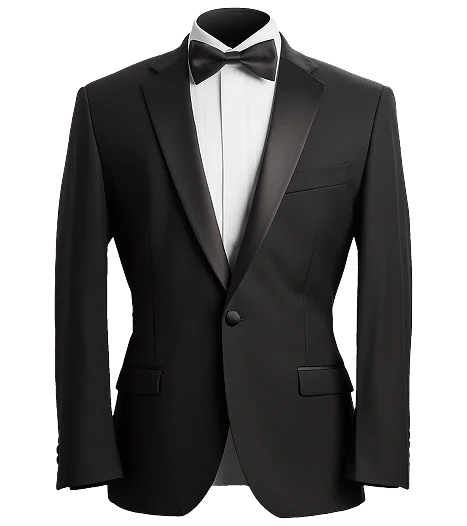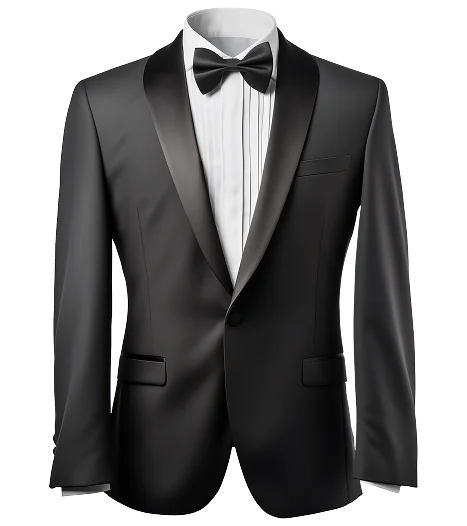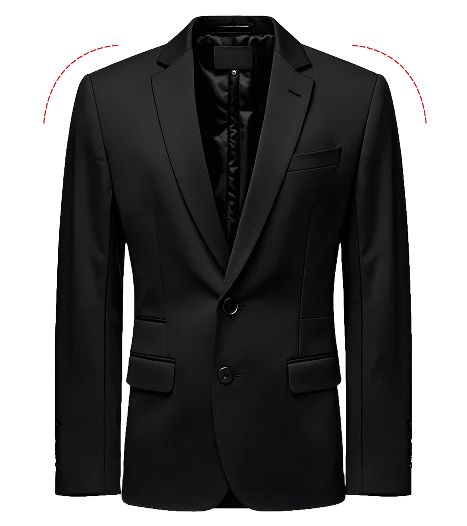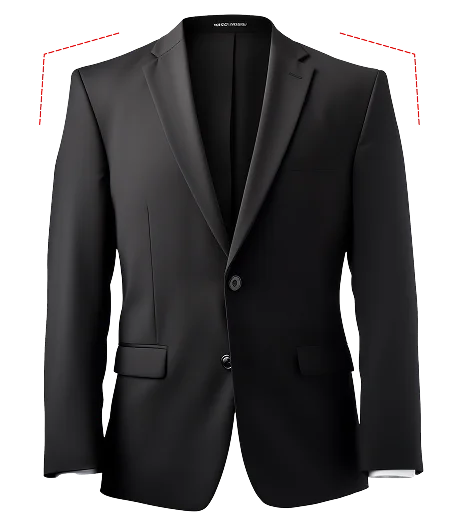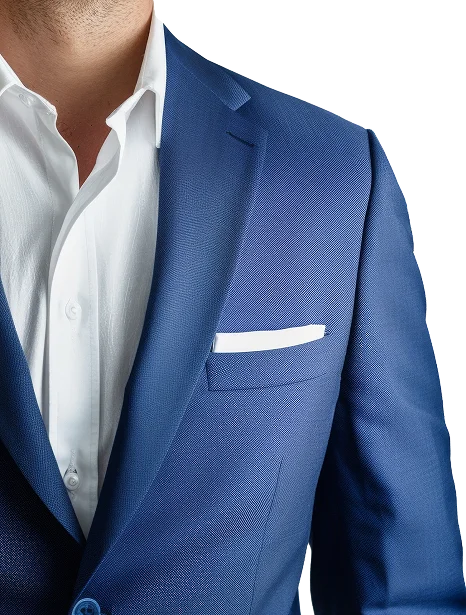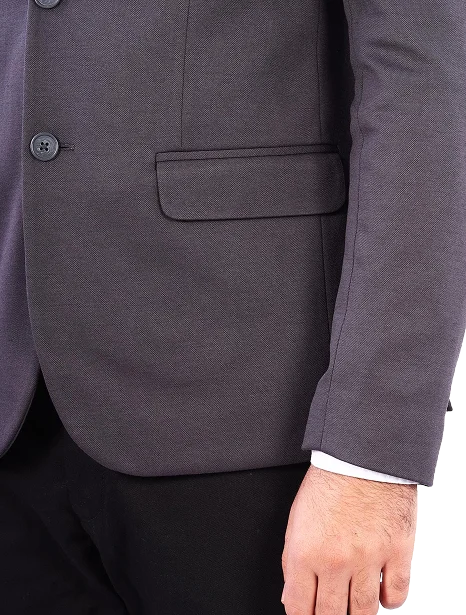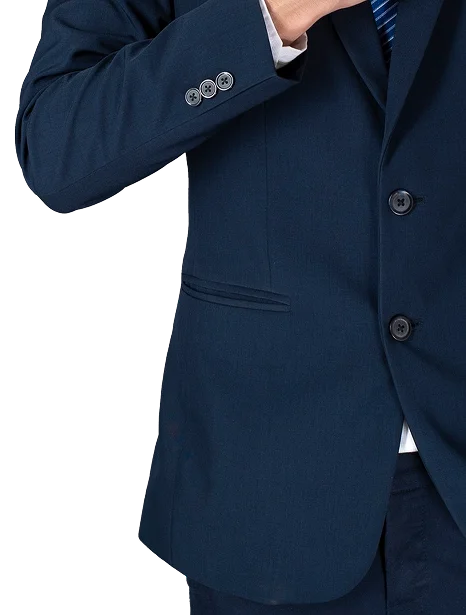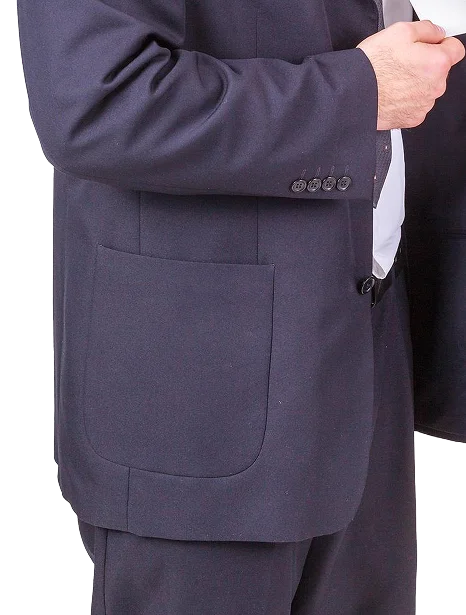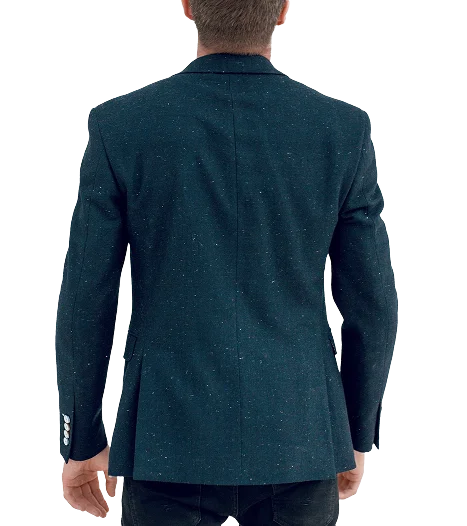Suit Anatomy
A well-crafted suit has the power to transform your appearance-and it all begins with understanding its anatomy. Each component of a suit plays a role in complementing your body structure. From broad shoulders to a tapered waist or an elongated torso, every individual has unique features. By thoughtfully selecting and assembling the right elements, a suit becomes more than just clothing-it becomes a tailored work of art, perfectly suited to your physique.
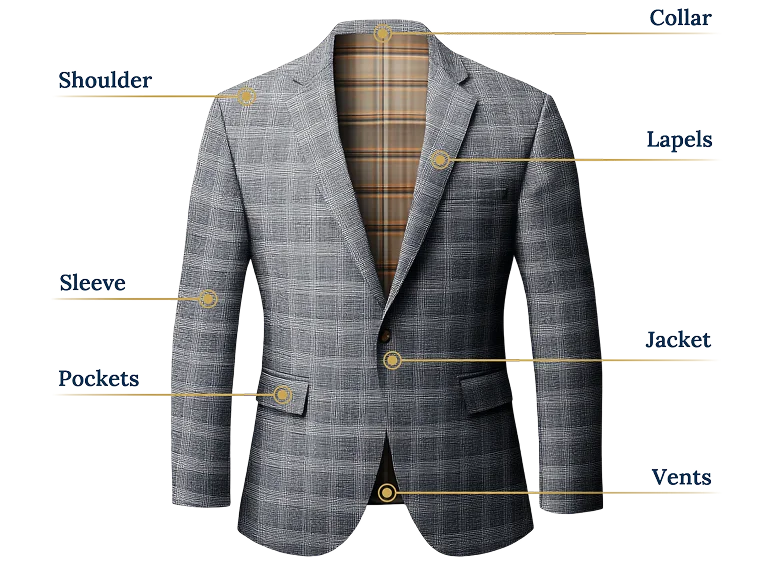
Jacket Front
The front of the jacket consists of two primary elements: chest darts and jacket quarters,
both essential for shaping the suit’s silhouette.
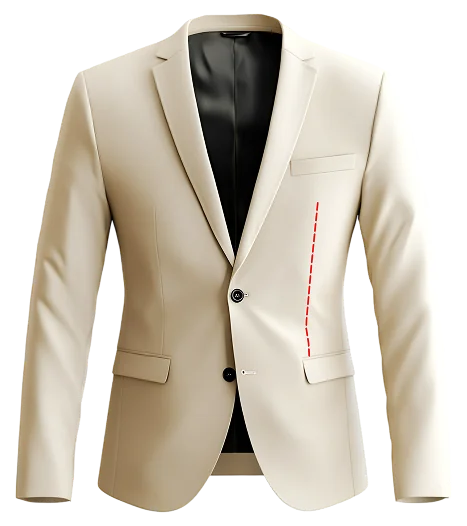
Chest Darts
These vertical seams on the front panel may seem decorative, but they’re functional. Chest darts contour the jacket to better fit the torso, creating a sharper, more tailored drape that enhances the overall look.
Jacket Quarters
Referring to the lower front panels beneath the waist buttons, jacket quarters impact the visual balance and flow of the suit. Their cut determines how the suit opens at the bottom, affecting style and proportion.
- Open Quarters: Flared away from the waist button, this style lengthens the legs and broadens the shoulders, making it ideal for creating a modern, athletic silhouette.
- Closed Quarters: Cut straight down from the buttons, this traditional style forms a "Y" shape, offering a neater fit and emphasizing formality.
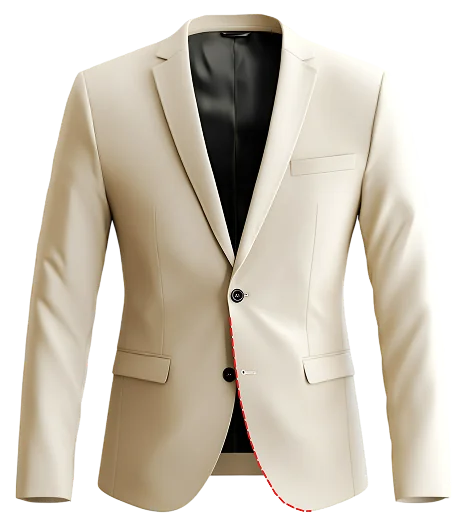
Lapels
The lapel refers to the folded part of the fabric at the collar extending to the top button of the suit jacket. The three primary styles that stand out are the notched, peaked, and shawl, each conveying a distinct impression in its own way.
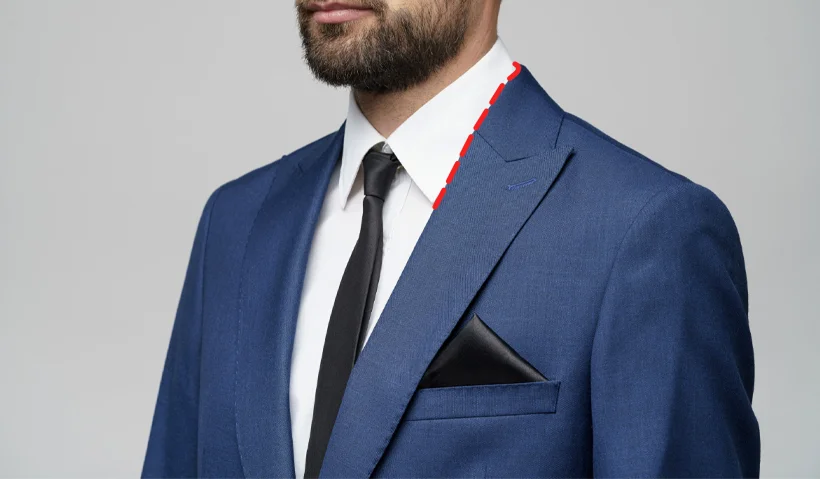
Collar
The fabric around the neck is the collar of the suit jacket. The collar sits around the neck and connects the lapel to the jacket’s neckline. A well-fitted collar should sit flush against the shirt collar without any gaps, contributing to a neat, sophisticated appearance. Through the proper alignment, this enhances the jacket’s formality and overall polish.
Shoulder
Jacket shoulders define the overall silhouette and establish a distinct style. Precision in their construction determines both comfort and visual proportion. Designers choose between structured and unstructured approaches, each affecting how the garment drapes over the torso.
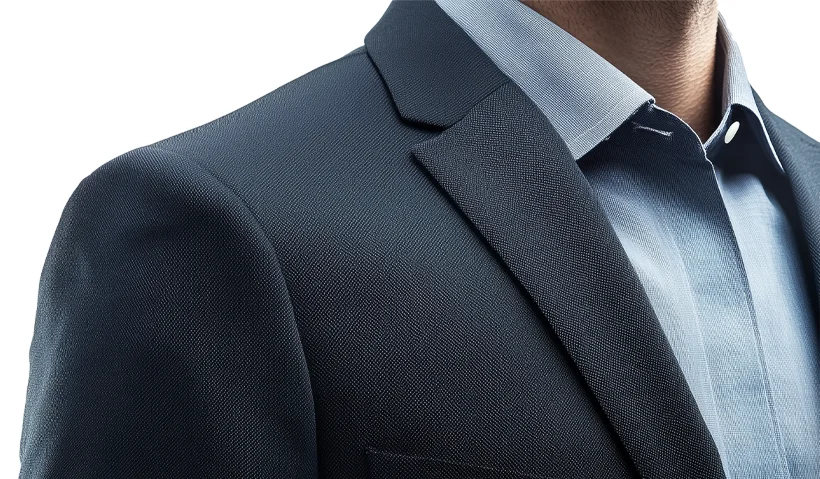
Natural vs. Structured Shoulders
Designers categorize shoulders into two primary styles: natural and structured.
Sleeve
Sleeves dictate the mobility and overall comfort you get when wearing a suit. With proper construction, a balance of mobility and comfort is created without compromising elegance. To achieve this, tailors refine armhole height and sleeve pitch to achieve both fluidity and optimal fit.
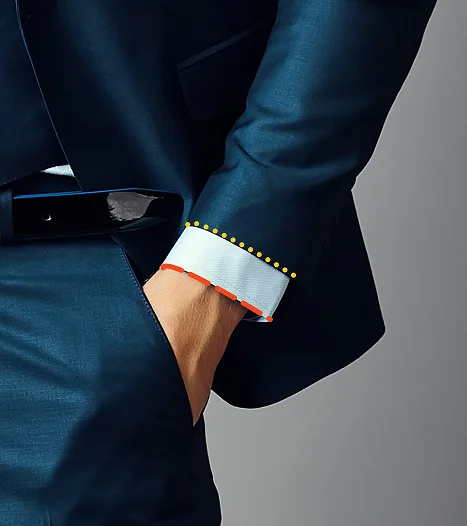
armhole construction
A higher armhole combined with a generous sleeve head enhances range of motion while minimizing fabric bunching. Sleeves should taper smoothly toward the wrist and reveal ¼ to ½ inch of shirt cuff.
Sleeve Buttons

kissing buttons

waterfall buttons
Typically ranging from one to four, more buttons generally suggest greater formality. Styles like kissing buttons
(touching but not overlapping) or waterfall buttons (overlapping slightly) are popular modern touches.
Pockets
Pockets serve both functional and stylistic roles, influencing the jacket’s level of formality. Most suit jackets
feature three exterior pockets: two side pockets and one chest pocket.
Vents
Vents are slits at the back of the jacket that improve mobility and enhance the suit’s drape, especially when seated. Tailors include one of three vent styles to accommodate different purposes.
Conclusion
Understanding the anatomy of a suit unlocks its full potential. From the shape of the lapel to the structure of the shoulders, each detail contributes to how a suit compliments your physique and expresses your style. Understanding these elements ensures your suit isn’t just worn, but truly fits.

